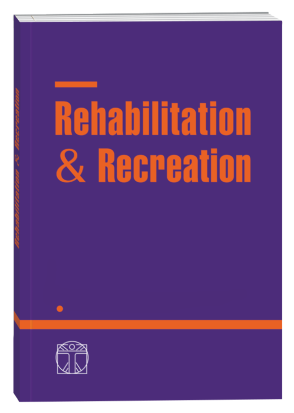ЗАСТОСУВАННЯ МЕТОДУ ЕМОЦІЙНО-ОБРАЗНОГО ПРОЦЕСІНГУ ПРИ ПСИХОСОМАТИЧНИХ РОЗЛАДАХ
DOI:
https://doi.org/10.32782/2522-1795.2025.19.2.24Słowa kluczowe:
психосоматичні розлади, метод психотерапії, емоційно-образний процесінг, терапевтична рефлексія, імагінація, трансгенеративний підхід, десоматизаціяAbstrakt
Вступ. Уперше представлено теоретичні положення, факти та емпіричні матеріали для з’ясування ефективності використання методу емоційно-образного процесінгу (ЕОП) зі зменшення та/або усуненню психосоматичних симптомів осіб двох категорій: тих, у кого був запит на допомогу, і тих, у кого спеціального запиту не було, хто в рамках навчання опановував метод ЕОП. Мета дослідження – з’ясувати витоки, зміст, структуру і доцільність використання методу емоційно-образного процесінгу в клієнтських кейсах із психосоматичними розладами; проаналізувати емпіричні матеріали щодо ефективності методу емоційно-образного процесінгу в порівняльних умовах. Матеріал і методи. У дослідженні використано методи теоретичного аналізу науково-методичних джерел, емпіричні методи діагностики, експерименту, статистично-математичної обробки. Представлено бліц-аналіз шести клієнтських звернень із психосоматичними симптомами, так само, як і деталізований структурний опис двох професійних кейсів. Експеримент проводився в групі здобувачів неформальної освіти, які навчалися методу ЕОП і спеціального запиту на терапію з приводу психосоматики не мали. Усі учасники діагностувалися до та після експерименту за такими методиками: «Шкала депресії, тривоги та стресу», «Опитувальник здоров’я пацієнта PHQ-15», «Шкала самозвіту симптомів посттравматичного стресового розладу», модифікована анкета «Індекс особистого благополуччя дорослих PWI-A». Результати. Огляд науково-теоретичних джерел показав, що метод емоційно-образного процесінгу базується на різних класичних модальностях, однак має свої особливості. Дослідження показало, що в експериментальній групі сукупна кількість невротичних та пов’язаних із ними соматичних симптомів після експерименту зменшилася. Суттєво, тобто статистично значимо, вона зменшилася для таких соматичних симптомів як,: біль у животі, біль у спині, біль у руках, ногах або суглобах, менструальні болі (дискомфорт), нудота, здуття живота або розлади ШКТ, проблеми зі сном. Терапевтичний звіт двох фахівців, які практикують метод ЕОП, продемонстрував: із числа шести клієнтських психосоматичних звернень за 2024 р. три клієнтки позбулися харчової залежності, у двох з яких зникла тяга до солодкого; у всіх цих трьох зменшилася зайва вага, а в однієї понизилась інсулінорезистентність до норми при цукровому діабеті другого типу. У четвертої клієнтки припинився хронічний кашель; у п’ятої зникли алергічні реакції на невизначений алерген; у шостого клієнта зникли рецидиви папілом на повіках після видалення, при тому, що до психотерапії вони повторно виникали після їх ліквідації лазерним способом. Ефект досягався в усіх цих випадках після кількох сесій. Висновки. Використання методу емоційно-образного процесінгу та результати досліджень указують на його ефективність та користь у повсякденній практиці фахівців, які працюють із психосоматичними скаргами клієнтів. Також ефективним щодо зменшення та усунення психосоматичних розладів виявився підхід навчання методу в рамках неформальної освіти.
Bibliografia
1. Глобальний гуманітарний огляд УКГП ООН, грудень 2023 року. 2024. URL: https://www.unocha.org/publications/report/world/global-humani tarian-overview-2024-enarfres
2. Губа Н. Рефлексія: проблематика формулювання концепту. Наукові записки. Серія «Психологія». 2024. Вип. 3(5). С. 13–19. https://doi.org/10.32782/cusu-psy-2024-3-2
3. Іллющенко С. Психологічний зміст феномена рефлексії як властивості, процесу, стану. Вісник Національного університету оборони України 2021. № 4(57). С. 32–43. https://doi.org/10.33099/2617-6858-2020-57-4-32-43
4. Мельник Ю., Стаднік А. Шкала депресії, тривоги та стресу : методичний посібник (українська версія). Харків : ХОГОКЗ, 2023. 12 с. URL: https://dspace.uzhnu.edu.ua/jspui/bitstream/lib/65092/1/Melnyk.Stadnik.4.2023. DASS.pdf
5. Обискалов І. Рефлексія: поняття, види, функції, психологічна структура. Журнал сучасної психології. 2023. № 4(31). С. 48–57. URL: https://journalsofznu.zp.ua/index.php/psych/article/view/3942
6. Палій А., Єльчанінова Т., Шевченко В. Рефлексія як структуротворчий компонент професійної діяльності. Перспективи та інновації науки. 2024. № 6(40). С. 867–876. https://doi.org/10.52058/2786-4952-2024-6(40)-867-876
7. Чабан О., Хаустова О. Психічне здоров’я в період пандемії COVID-19. Особливості психологічної кризи, тривоги, страху та тривожних розладів. НейроNevs: психоневрологія та нейропсихіатрія. 2020. № 3(114). С. 26–36. https://doi.org/10.11603/2411-1597.2020.3.11678
8. Чаплак Я., Чуйко Г. Рефлексія як метакогнітивний феномен психології. Psychological journal. 2021. Вип. 7. № 9(53). С. 35–47. URL: https://archer.chnu.edu.ua/xmlui/handle/123456789/4189
9. Шевченко Н. Рефлексивність як чинник розвитку особистості психолога-консультанта. Журнал сучасної психології. 2022. № 4. С. 85–92. https://doi.org/10.26661/2310-4368/2022-4-10
10. Abraham N., Torok М. The Shell and the Kernel. Renewals of Psychoanalysis, Volume 1. London, 1994. 280 p. URL: https://press.uchicago.edu/ucp/books/book/chicago/S/bo3636993.html
11. Chaban O., Khaustova O., Sak L. A psychosomatic approach to the diagnosis and treatment of anxiety in patients with chronic noncommunicable diseases. Psychosomatic Medicine and General Practice. [Internet]. 2020 May 21 [cited 2025 Jun. 3], 5(1). https://doi.org/10.26766/pmgp.v5i1.229
12. Fava G., Cosci F., Sonino N. Current psychosomatic practice. Psychother Psychosom. 2017, 86(1). pp. 13–30. https://doi.org/10.1159/000448856
13. Foa E., Riggs D., Dancu C. et al. Reliability and validity of a brief instrument for assessing post-traumatic stress disorder. Trauma Stress. 1993, № 6. pp. 459–473. https://doi.org/10.1007/BF00974317
14. Gilbert P. A Brief Outline of the Evolutionary Approach for Compassion Focused Therapy. EC Psychology and Psychiatry. 2017, 3(6). pp. 218–227. URL: https://ecronicon.net/assets/ecpp/pdf/ECPP-03-00107.pdf
15. International Wellbeing Group. Personal Wellbeing Index: 5th Edition. Melbourne: Australian Centre on Quality of Life. Deakin University. 2024. URL: https://www.acqol.com.au/uploads/pwi-a/pwi-a-english.pdf
16. Kirby J. Compassion interventions: The programs, the evidence, and implications for research and practice. Psychology and Psychotherapy: Theory, Research and Practice. 2016, 90(3). pp. 432–455. https://doi.org/10.1111/papt.12104
17. Kroenke K., Spitzer R., Williams J. The PHQ-15: validity of a new measure for evaluating the severity of somatic symptoms. Psychosomatic Medicine. 2002, 64(2). pp. 258–266. https://doi.org/10.1097/00006842-200203000-00008
18. Leaviss J., Uttley L. Psychotherapeutic benefits of compassion-focused therapy: An early systematic review. Psychological Medicine. 2015, 45(5). pp. 927–945. https://doi.org/10.1017/S0033291714002141
19. Lovibond S., Lovibond P. Manual for the Depression Anxiety and Stress Scales. (2nd Ed.). Sydney: Psychology Foundation, 1995. URL: https://search.worldcat.org/title/Manualfor-the-depression-anxiety-stress-scales/oclc/222009504
20. Satin D. Community Mental Health, Erich Lindemann, and Social Conscience in American Psychiatry – a Source Book of the History of Ideas and Ideologies. New York: Routledge, 2020. https://dash.harvard.edu/ entities/publication/621ef515-e4ce-4f8da677-6eab40ba1464
21. Schützenberger A. The Ancestor Syndrome: Transgenerational Psychotherapy and the Hidden Links in the Family Tree. Routledge. 1998. 224 p. URL:https://www.routledge.com/The-Ancestor-Syndrome-Transgenerational-Psychotherapy-and-the-Hidden-Links-in-the-Family-Tree/Schutzenberger/p/book/9780415191876?srsltid=AfmBOoqz6ueQGz5SLtzM5RJk3nY4V7eoYxGves1wWNgNWQawrsnTBEvI
22. Stefan C., Cheie L. Self-compassion and social anxiety in late adolescence: contributions of self-reflection and insight. Self and identity. 2020. pp.1–13. https://doi.org/10.1080/15298868.2020.1861082.
23. World Bank. Ukraine – Third Rapid Damage and Needs Assessment (RDNA): February 2022. December 2023 (English). Washington, D.C.: World Bank Group. URL: http://documents.worldbank.org/curated/en/099021324115085807
Pobrania
Opublikowane
Jak cytować
Numer
Dział
Licencja

Utwór dostępny jest na licencji Creative Commons Uznanie autorstwa – Użycie niekomercyjne – Bez utworów zależnych 4.0 Międzynarodowe.





